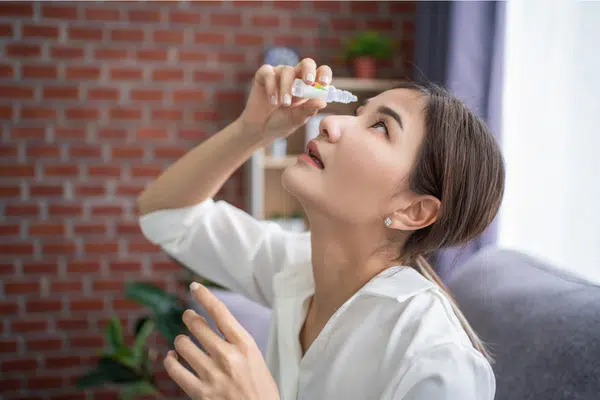Dry eye is one of the most common reasons that patients seek an appointment with an eye doctor, whether they know it or not. Dry eye bothers nearly everyone at some point in their life. Possible symptoms of dry eye may include the following:
- Redness
- Eye pain
- Pressure sensation
- Burning or stinging
- Blurry vision
Despite the seeming contradiction, excessive tearing or “watery eyes” are also very common complaints associated with dry eyes. Some individuals may have dry eye without experiencing any symptoms.

Our eye, in its normal state, has a baseline tear production. These tears are very complex and include proteins, enzymes, lipids and mucin, in addition to the “watery” component of the tear. When there are problems due to dry eye, it suggests the normal state of the tear film has been altered. This altered state can be caused by a variety of problems, many of which are treatable. These causes may include systemic diseases, medication use, allergies, previous eye surgery, contact lens use and even environmental changes.
The first step is to correctly identify the problem by ruling out other possible causes for the symptoms such as infection, inflammation or glaucoma. Only a trained eye care professional can do this. Once dry eye has been diagnosed, there is a multi-step approach to treatment.
Treatment Options for Your Dry Eyes
Treatment begins with education. There are a number of ways to modify your lifestyle and environment to reduce dry eye problems. In many cases, these simple modifications may alleviate symptoms of dryness. Medical treatment is then directed at improving the underlying problem of the dry eye. Sometimes a lack of tears may be the culprit, but more commonly there are other associated issues that must be addressed such as contact lens use, eyelid disease, ocular inflammation or even poor tear quality.
Therapy typically will begin with artificial tears two to six times per day, depending on the severity. There are many different types of artificial tears available over the counter. They all differ in some way, and deciding which one is best to use will depend on the severity and type of the dryness. It is best to avoid allergy or redness-reducing drops which, when used inappropriately, can make dry eyes worse. If artificial tears do not sufficiently treat the symptoms and signs of dryness, there are a multitude of treatment modalities to help you.
Get more dry eye treatment options based on Poor Tear Quality vs. Poor Tear Quantity.
The doctors at Berkeley Eye Center are experts at customizing a treatment plan for your specific problem. Call one of our 14 locations to improve the health of your eyes! To schedule an appointment, please call our office at 713-526-1600 or schedule online.
